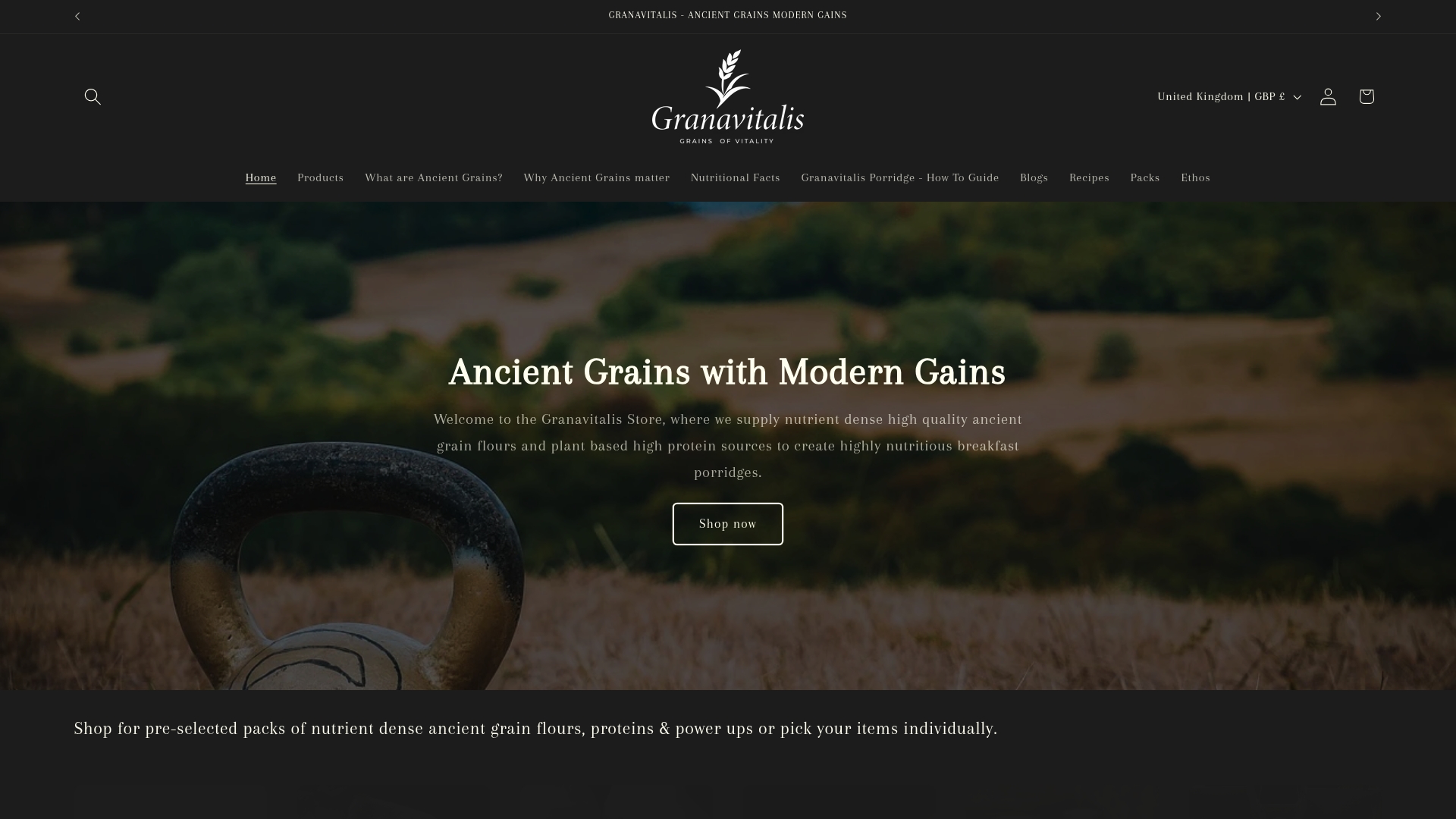
Understanding Ancient Grains and Satiety Effects
Share
Ancient grains might sound like a throwback but their impact on health is thoroughly modern. While supermarkets are packed with bread and pasta made from identical strains of wheat, these grains remain virtually unchanged for thousands of years. That is no small detail. Studies show ancient grains like quinoa and amaranth often have higher protein and mineral content than modern wheat. The surprising part? The real value lies in how these grains help you stay fuller for longer, making them a secret weapon for anyone looking to support their energy and wellbeing in ways processed grains simply cannot match.
Table of Contents
- What Are Ancient Grains And Their Nutritional Profile?
- Why Satiety Matters For Health And Wellbeing
- How Ancient Grains Promote Satiety
- Key Varieties Of Ancient Grains And Their Benefits
- Incorporating Ancient Grains Into A Satiety-Focused Diet
Quick Summary
| Takeaway | Explanation |
|---|---|
| Ancient grains offer superior nutrition. | They provide higher protein, minerals, and antioxidants compared to modern grains, aiding overall health. |
| Integrate ancient grains for satiety. | These grains promote feelings of fullness, stabilising energy levels and reducing hunger pangs effectively. |
| Individual needs vary with grain consumption. | Consult nutritional professionals to tailor ancient grain use to specific dietary requirements and health goals. |
| Strategic meal planning enhances benefits. | Combining ancient grains with lean proteins and balanced meals boosts satiety and maximises nutritional impact. |
What are Ancient Grains and Their Nutritional Profile?
Ancient grains represent an extraordinary nutritional lineage that predates modern agricultural practices, offering profound health benefits rooted in traditional cultivation methods. These remarkable grains have sustained human populations for thousands of years, representing a nutritional treasure trove that modern food systems have largely overlooked.
Origins and Defining Characteristics
Ancient grains are defined as grain varieties that have remained largely unchanged by selective breeding over millennia. Unlike contemporary wheat varieties engineered for mass production, these grains retain their original genetic structures and nutritional complexity. Examples include quinoa, amaranth, millet, einkorn, emmer, spelt, and kamut.
Read more about the fascinating world of ancient grains reveals that these grains are not merely historical curiosities but powerful nutritional powerhouses. According to research published in the Nutrition Bulletin, ancient wheat varieties exhibit distinctive nutritional profiles that set them apart from modern grain varieties.
Nutritional Excellence
The nutritional profile of ancient grains distinguishes them as exceptional dietary components. These grains typically offer superior nutrient density compared to contemporary wheat varieties. Key nutritional advantages include:
- Higher protein content with more complete amino acid profiles
- Enhanced mineral concentrations including zinc, magnesium, and iron
- Richer antioxidant levels supporting cellular health
- Complex carbohydrate structures promoting sustained energy release
- Lower glycemic index supporting metabolic stability
Particularly noteworthy is their potential contribution to satiety and metabolic health. Unlike refined grains that cause rapid blood sugar spikes, ancient grains provide a more balanced nutritional experience. Their intricate molecular structures support slower digestion, helping regulate hunger signals and maintaining consistent energy levels throughout the day.
Below is a comparison table summarising the key nutritional and satiety differences between ancient grains and modern grains, as discussed in the article.
| Feature | Ancient Grains | Modern Grains |
|---|---|---|
| Protein Content | Higher, often with complete amino acid profile | Lower, incomplete amino acid profile |
| Mineral Concentration | Enhanced (zinc, magnesium, iron) | Reduced |
| Antioxidant Levels | Richer | Lower |
| Carbohydrate Complexity | More complex, slower energy release | Simpler, faster energy release |
| Glycaemic Index | Lower, supports metabolic stability | Higher, causes rapid blood sugar spikes |
| Satiety Effect | Promotes longer-lasting fullness | Less effective in sustaining fullness |
| Processing History | Largely unchanged, minimally processed | Heavily bred, often refined |
While these grains offer remarkable nutritional benefits, consumers should approach them with informed perspectives. Not all ancient grains are inherently superior or universally suitable, and individual dietary needs vary significantly. Consulting nutritional professionals can help individuals integrate these grains effectively into personalised dietary strategies.
Why Satiety Matters for Health and Wellbeing
Satiety represents a fundamental biological mechanism that extends far beyond simple hunger management, playing a critical role in metabolic health, nutritional balance, and overall physiological function. Understanding satiety helps individuals make more informed dietary choices that support long-term wellness and metabolic stability.
The Science of Feeling Full
Satiety is the sensation of fullness that persists after eating, regulated by complex interactions between hormonal signals, neurological pathways, and nutritional content. When food is consumed, multiple physiological processes activate to communicate nutritional status to the brain, helping regulate appetite, energy expenditure, and metabolic responses.
According to guidance from Public Health England, understanding these intricate mechanisms is crucial for developing comprehensive strategies to address nutritional challenges and promote healthier eating patterns.
Key Physiological Impacts
Effective satiety mechanisms contribute significantly to overall health through several critical pathways:
- Prevents overconsumption of calories
- Stabilises blood sugar levels
- Supports consistent energy distribution
- Reduces likelihood of metabolic disorders
- Promotes healthier relationship with food
Nutrients that enhance satiety typically share common characteristics: higher protein content, increased fibre density, and complex molecular structures that slow digestion. These nutritional components trigger more sustained hormonal responses, particularly ghrelin and leptin, which communicate fullness and regulate hunger signals.
Understanding satiety goes beyond weight management. It represents a holistic approach to nutritional wellness, recognising that how we eat is often as important as what we eat. Balanced meals that promote gradual nutrient absorption and consistent energy release can significantly improve metabolic health, cognitive function, and overall physiological resilience.

While individual responses to satiety signals vary, developing nutritional awareness and selecting foods that support sustained fullness can transform dietary experiences from mere consumption to purposeful nourishment.
How Ancient Grains Promote Satiety
Ancient grains represent a nutritional strategy that goes beyond mere sustenance, offering a sophisticated approach to managing hunger, stabilising energy levels, and supporting metabolic health. Their unique molecular structures and nutrient compositions make them exceptional allies in promoting sustained satiety and overall nutritional wellbeing.
Molecular Mechanisms of Fullness
The satiety-promoting properties of ancient grains stem from their complex carbohydrate profiles and intricate fibre compositions. Unlike refined grains that trigger rapid blood sugar spikes, ancient grains feature molecular structures that encourage slower, more gradual nutrient absorption. This measured release mechanism signals the body’s fullness receptors more effectively, helping regulate appetite and energy metabolism.
Explore the gut health benefits of ancient grains reveals the intricate relationship between grain composition and digestive processes. According to research from the University of Nottingham, specific ancient grains like pearl millet porridge demonstrate remarkable abilities to increase gastric volume and reduce hunger compared to conventional grain options.
Nutritional Strategies for Sustained Fullness
Ancient grains promote satiety through several key nutritional mechanisms:
- Higher protein content supporting muscle recovery
- Complex carbohydrate structures slowing digestion
- Rich fibre profiles enhancing digestive efficiency
- Lower glycemic index preventing sudden energy crashes
- Balanced micronutrient compositions supporting metabolic function
Particularly noteworthy is their ability to stimulate hormonal responses that communicate fullness. The slow-release energy profile of these grains triggers a more sustained production of appetite-regulating hormones like leptin and peptide YY, which help maintain consistent hunger signals and metabolic balance.
While individual responses may vary, integrating ancient grains into dietary strategies offers a nuanced approach to nutritional management. Their multifaceted nutritional profile supports not just satiety, but broader metabolic health, demonstrating that mindful grain selection can transform dietary experiences from simple consumption to purposeful nourishment.
Key Varieties of Ancient Grains and Their Benefits
Ancient grains encompass a diverse range of nutrient-dense, genetically unmodified grain varieties that offer remarkable health benefits beyond conventional wheat and rice. Each variety brings unique nutritional profiles, demonstrating the extraordinary potential of traditional agricultural practices in supporting human health and metabolic function.
Nutritional Diversity of Ancient Grains
The landscape of ancient grains is rich and varied, featuring extraordinary varieties that have sustained human populations for millennia. These grains represent more than dietary staples; they are nutritional powerhouses with distinctive molecular compositions that support holistic wellness.
Learn why ancient grains matter highlights the significance of these nutritional treasures. According to a systematic review examining ancient grain consumption, different varieties demonstrate remarkable health-promoting characteristics across various metabolic markers.
Prominent Ancient Grain Varieties
Several ancient grain varieties stand out for their exceptional nutritional profiles:
- Quinoa: Complete protein source with all essential amino acids
- Amaranth: High in protein and minerals like calcium and magnesium
- Millet: Excellent source of antioxidants and beneficial for blood sugar regulation
- Einkorn: Lower gluten content and higher protein compared to modern wheat
- Spelt: Rich in minerals and supports improved digestive health
Each grain variety offers unique benefits, from supporting muscle recovery to enhancing metabolic efficiency.
The table below outlines the distinctive benefits and nutritional characteristics of prominent ancient grain varieties featured in the article.
| Ancient Grain | Notable Nutritional Features | Primary Health Benefit |
|---|---|---|
| Quinoa | Complete protein, all essential amino acids, mineral-rich | Supports muscle recovery and cell function |
| Amaranth | High protein, rich in calcium and magnesium | Enhances bone health and metabolism |
| Millet | Abundant antioxidants, supports blood sugar regulation | Aids metabolic stability |
| Einkorn | Lower gluten, higher protein than modern wheat | Suitable for sensitive digestion |
| Spelt | Mineral-rich, fibre-dense | Supports digestive health |
| Quinoa, for instance, provides a complete protein profile rarely found in plant-based sources, while amaranth boasts exceptional mineral density that supports bone health and cellular function. |
Understanding these grains requires appreciating their evolutionary adaptations. Developed through generations of traditional agricultural practices, these grains have retained complex nutritional structures that modern, industrially processed grains often lack. Their molecular complexity translates to more nuanced metabolic interactions, supporting sustained energy release and comprehensive nutritional support.
Incorporating Ancient Grains into a Satiety-Focused Diet
Creating a nutrition strategy centred on ancient grains requires thoughtful integration and understanding of their unique properties. These nutrient-dense foods offer more than simple sustenance, providing a sophisticated approach to managing hunger, stabilising energy levels, and supporting comprehensive metabolic health.
Strategic Meal Planning
Successful incorporation of ancient grains demands a nuanced approach that considers individual nutritional needs and metabolic responses. The key lies in understanding how different grains interact with individual physiological systems and designing meal structures that maximise their satiety-promoting potential.
Discover the nutritional power of a unique ancient grain provides insights into expanding dietary diversity. According to research comparing whole grain porridge varieties, strategic grain selection can significantly influence appetite regulation and metabolic responses.
Practical Integration Strategies
Effective incorporation of ancient grains into a satiety-focused diet requires multiple considerations:
- Gradual introduction to allow digestive adaptation
- Balanced combination with lean proteins
- Varied preparation methods to maintain interest
- Portion control aligned with individual metabolic needs
- Consistent meal timing to support hormonal regulation
Breakfast represents an optimal meal for ancient grain integration. A quinoa porridge topped with nuts, or an amaranth-based breakfast bowl with added protein, can provide sustained energy and promote feelings of fullness. The complex carbohydrate structures and high protein content of these grains support gradual nutrient absorption, helping to stabilise blood sugar and reduce mid-morning hunger pangs.
Individual metabolic responses vary, making personalisation crucial. Consulting nutritional professionals can help develop tailored strategies that align ancient grain consumption with specific health goals, ensuring that dietary interventions are both enjoyable and physiologically supportive.
Experience Genuine Satiety with Ancient Grains at Granavitalis
Are you still reaching for breakfasts that leave you hungry and tired before midday? As highlighted in this article, the real challenge is finding foods that truly support satiation and long-lasting energy. Modern cereals and flours are often empty and unfulfilling, leading to blood sugar crashes, cravings, and that all-too-familiar mid-morning slump. You deserve better. At Granavitalis, we have brought together a collection of authentic ancient grain flours that work in harmony with your body. Each variety is naturally rich in protein, complex fibre, and essential micronutrients to help you feel genuinely nourished and stable. Your breakfast can finally become a foundation for balanced hunger and steady focus.

Make the switch today for noticeable improvement in your daily experience. If you are striving for better metabolic health and more controlled satiety, discover our Metabolic Advantage Pack for curated ancient grain solutions, or visit Granavitalis to start transforming your mornings. Choose food with purpose and begin each day with real, lasting nourishment.
Frequently Asked Questions
What are ancient grains?
Ancient grains are types of grains that have remained largely unchanged by selective breeding over thousands of years. Examples include quinoa, amaranth, and spelt. They are known for their nutritional density and health benefits compared to modern grain varieties.
How do ancient grains enhance satiety?
Ancient grains promote satiety due to their complex carbohydrate structures and high fibre content, which slow digestion, leading to a gradual release of energy. This helps regulate hunger signals and maintain consistent energy levels throughout the day.
What nutritional benefits do ancient grains offer?
Ancient grains typically have higher protein content, increased mineral concentrations, and rich antioxidant levels compared to contemporary grains. They also have a lower glycemic index, which helps stabilise blood sugar levels and supports metabolic health.
How can I incorporate ancient grains into my diet?
Ancient grains can be introduced into meals through various preparations, such as porridge, salads, or baked goods. Pairing them with lean proteins and other nutrient-dense foods can enhance their satiety effects and make balanced meals.
Recommended
- Ancient Grains & Your Gut: A Natural Partnership for Better Health – Granavitalis
- What are Ancient Grains? – Granavitalis
- Why Ancient Grains matter – Granavitalis
- Teff: The Tiny Ancient Grain With Mighty Nutritional Power – Granavitalis
- What is Gluten? Understanding Its Role and Impact – naturessoulshop
